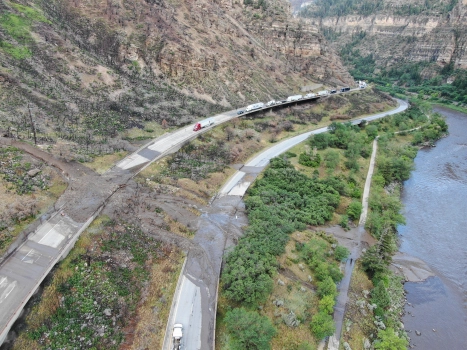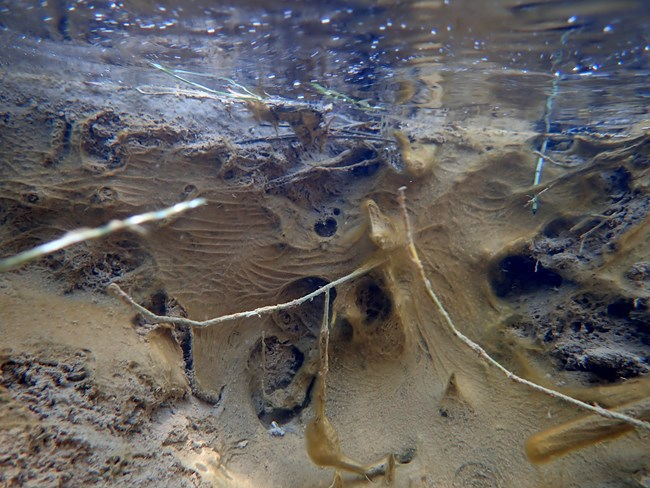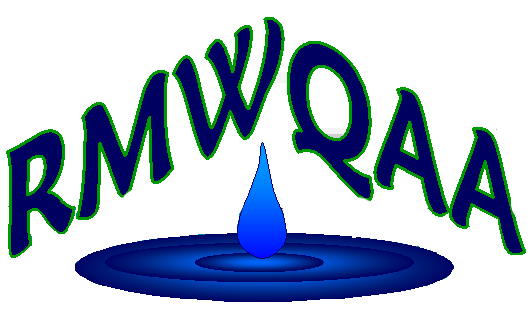During a recent road trip to Utah, I found myself having to navigate around the I-70 road closures due to the recent mudslides the state has seen. This got me thinking of how these mudslides are not only having an impact on infrastructure but also the environmental impact they have on things such as water quality.
But what exactly is a mudslide? A mudslide is a type of landslide that is the fast-moving flow of debris, earth, or rock that moves down a slope. As defined by the CDC, ”Mudslides develop when water rapidly accumulates in the ground and results in a surge of water-saturated rock, earth, and debris”. This debris then flows down the slope, often with such a force that it destroys anything in its path. Depending on the location of the mudslide it can often cause damage to things from roads to rivers. These natural disasters are often seen in areas that have had wildfires, previous landslides, steep slopes, recent downpours, and high exposure to surface runoff.

As seen from the recent road closures in Colorado, these natural disasters can cause some serious damage. But where do the mudslides stop? These slides have a difficult time crossing rivers and this often leads to the contents of the slide flowing through the river. As a result, we see major increases in the amount of sediment (or turbidity) in these rivers which leads to less clear water. This increase in turbidity tends to increase temperature and decrease dissolved oxygen levels which can often harm aquatic life.
With high turbidity, there is also a decrease in UV exposure which can potentially lead to the growth of harmful algae blooms such as cyanobacteria. During my trip, I had some direct experience with high cyanobacteria blooms at Zion National Park. Though this was caused by a monsoon rather than a mudslide, it was interesting seeing the impact that these blooms have on the water. These toxic blooms create a film on top of the water that can contribute to the decrease in UV exposure in the river as well as a decrease in oxygen and nutrients that are needed for aquatic life. It is also toxic to ingest and will often leave any person or animal that drinks the water very sick. There are no known remedies for curing these effects and in severe cases can lead to death.

The environmental impacts of mudslides are large, and we can see their dramatic effects anywhere in the world, including here in Colorado. With mudslides comes an increase in turbidity, which can lead to an increase in water temperatures, a decrease in dissolved oxygen, and potentially a decrease in UV exposure. All these factors can cause harm to aquatic life in our natural water systems. All this said, while mudslides often feel like a nuisance with the various road closures they can cause, mudslides also have a detrimental impact on our ecosystem that I believe is important to be aware of.
References
https://www.aquasana.com/info/how-mudslides-contaminate-your-water-supply-pd.html
https://www.cdc.gov/habs/general.html
https://www.analyticaltechnology.com/analyticaltechnology/gas-water-monitors/blog.aspx?ID=1324&Title=What%20Happens%20if%20Water%20Turbidity%20Gets%20Too%20High
https://www.nps.gov/zion/planyourvisit/toxic-cyanobacteria-bloom-in-the-virgin-river-and-the-streams-of-zion-national-park.htm
https://www.cdc.gov/disasters/landslides.html
https://www.denverpost.com/2021/06/27/glenwood-canyon-mudslide-i70-closure/
This blog was written by Michael Hendricks, a Water Quality Supervisor for GEI Consultants He has 7 years of experience in the industry and holds a BA in Biological Science from Colorado State University in Fort Collins.
 Welcome to the
RMWQAA Website!
Welcome to the
RMWQAA Website!  Welcome to the
RMWQAA Website!
Welcome to the
RMWQAA Website!